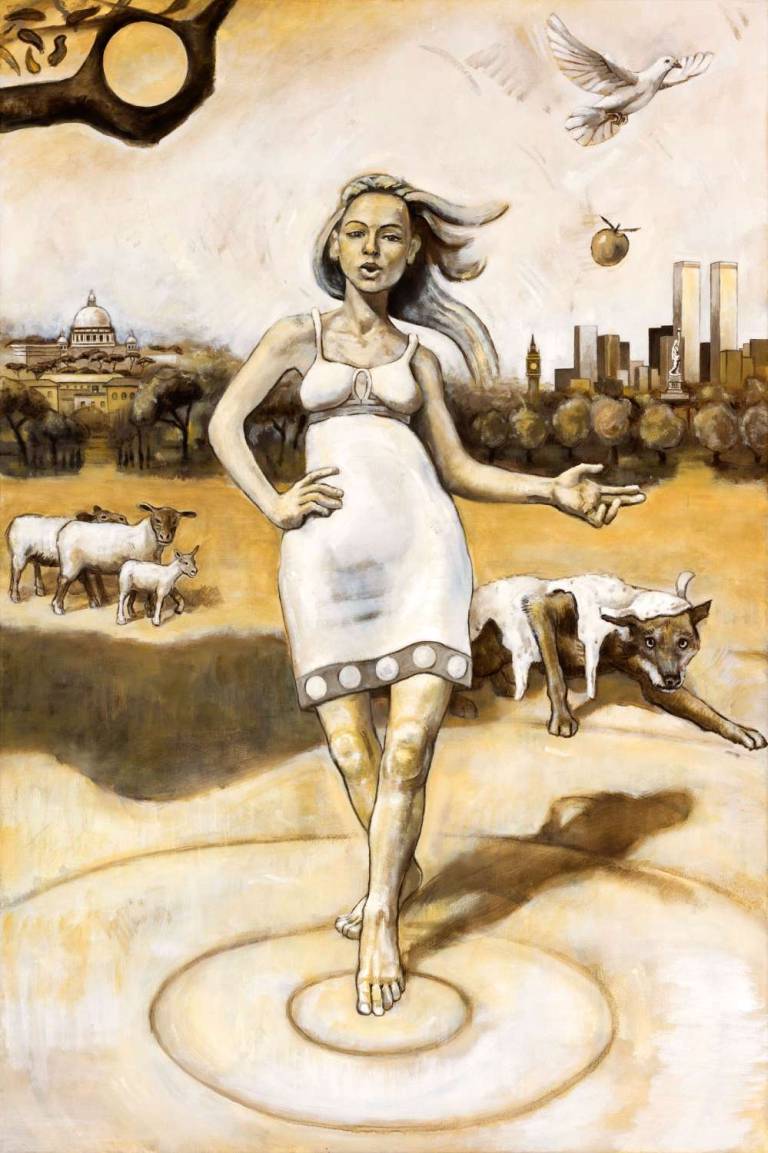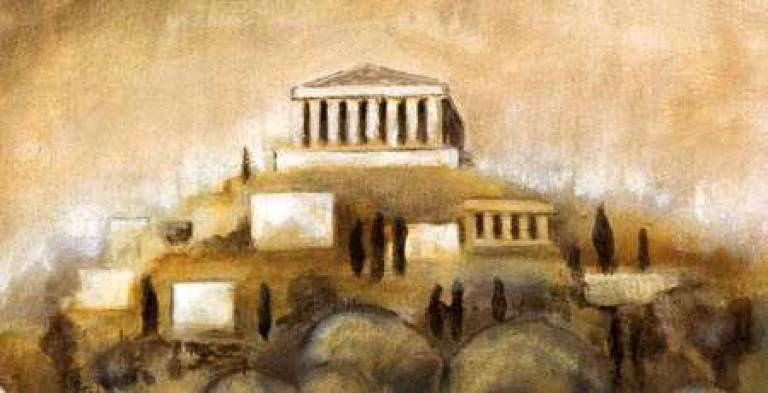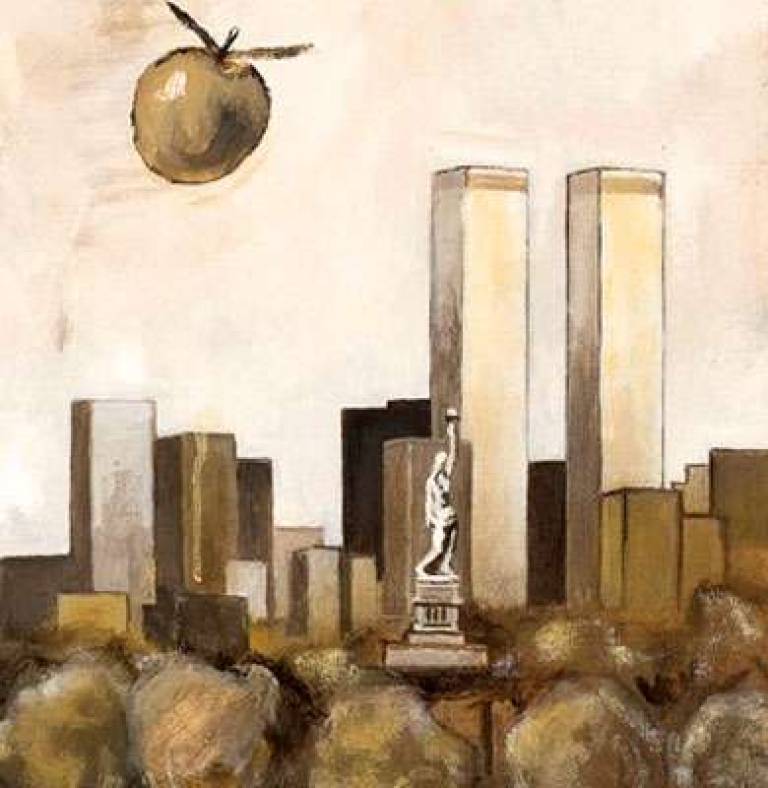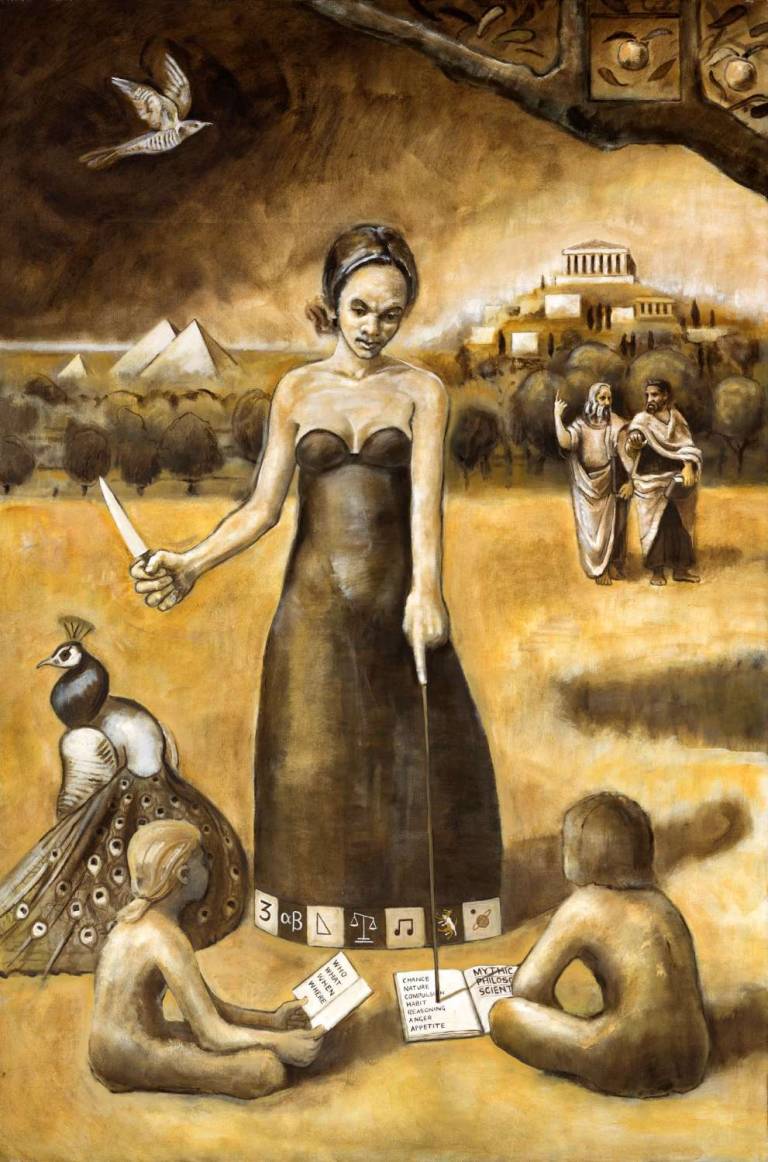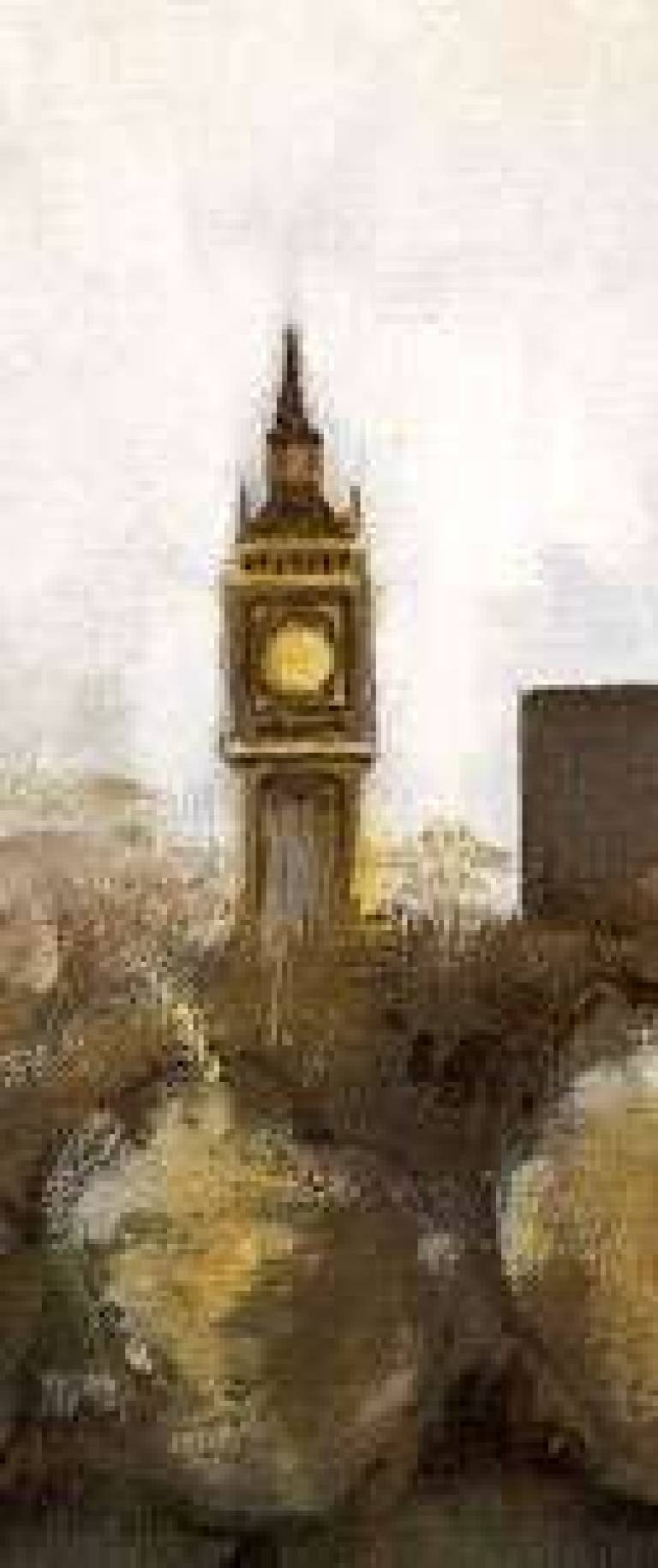Trivium

“It prepares the mind to understand everything that can be taught in words.” John of Salisbury
The Trivium is a method and a model for thinking which for more than fifteen centuries was considered the best education a free person could receive in the Western world.
Like many people interested in the Trivium method today, I started researching education when I became a parent. I found my way to classical education through John Taylor Gatto’s critique of modern schooling and Dorothy L Sayers’ recommendation of the Trivium as an education for life. I wanted to understand the Trivium better, so I read John of Salisbury, Sister Miriam Joseph, books on Rhetoric…The Bibliography section gives a selected list. It is a vast subject, really without end, so I found I needed some way of recording the tremendous amount of research I had taken on and as I am an artist, I naturally turned to the image and started to paint. The painting took over three years to complete and went through considerable changes and developments as my learning grew. Often I had to invent new symbols to represent important points. For example, How to express a ‘logical fallacy’ or a ‘contradiction’ in paint?
Later, I looked for examples of others who had painted it. What I discovered surprised me. From the middle ages on, the Trivium was carved onto the outside of some of Europe’s finest churches and cathedrals: Notre Dame in Paris, Chartres, Giotto’s Campanile in Florence, Munster Church at Freiburg, Germany. It was painted onto walls and ceilings at Montpellier, at Peterborough, in the Vatican. It was depicted in the stained glass windows as at Loan Cathedral in France. Even the doorways in the Old Schools Quadrangle of the Bodleian Library at Oxford are titled and organised by the same principle. It was all over the place – anywhere education was important.
During the 19th century, with the advent of the modern education system, the Trivium ceased to form the backbone of the curriculum; logic and rhetoric were dropped and a new emphasis on technology and industry replaced them. However, there has been recently a huge rekindling of interest in classical education and the liberal arts led by parents, particularly home schoolers, but also by schools and universities.
The painting you see here is a 21st century take on the Trivium. I have used symbolic forms to condense components of Grammar, Logic and Rhetoric. Whenever possible, I have tried to use forms that are standard, taken from Hall’s Dictionay of Subjects and Symbols in Art. My aim is to provide a mnemonic, a memory aid, to help learn and remember key elements of the Trivium. It is a big and complex subject and it is helpful to have an image in front of you as you learn it. You can start anywhere but in my opinion the best place to start is with logical fallacies. Learn to identify and kill the dragon. Google logical fallacies.
This is a painting to make you smarter, to make you more intelligent. An image to help you organise your thoughts and mind and to make them more effective. I have turned it into a high quality print to be used by parents, teachers and children as an educational tool.



